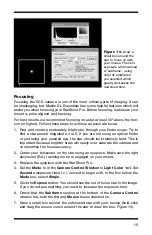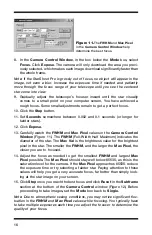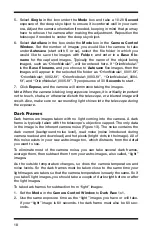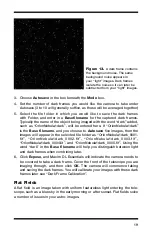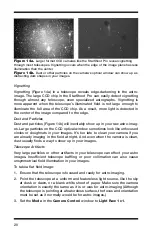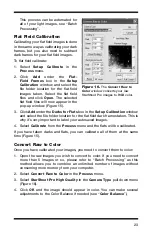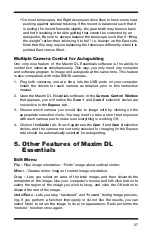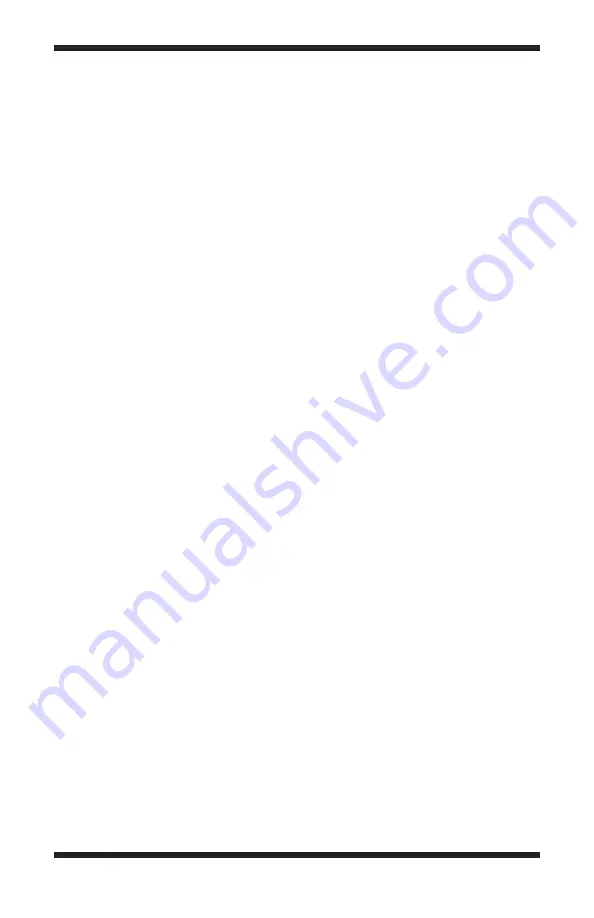
29
There are three elements which must be set: the
Permanent Stretch Type
,
the
Input Range
, and the
Output Range
. You can use the
Preview Image
to
see how changing these parameters will affect the resultant image (or click the
Full Screen
button to see the changes applied to your actual image). You can
also open the
Screen Stretch Window
to see how changing these param-
eters change the histogram.
For the
Permanent Stretch Type
, the
Linear Only
mode is useful for adjust-
ing the range of pixels to match a particular file format. The
Log
mode is useful
for compressing the dynamic range of the image, but can be rather harsh. The
Gamma
mode allows you to selectively emphasize bright or dim parts of the
image by entering a suitable
Gamma Value
. A
Gamma
of 1 has no effect, less
than 1 will emphasize faint details, while a value greater than 1 will emphasize
bright details.
The
Input Range
can be set to
Screen Stretch
, which in
Linear Mode
pro-
duces an output matching the current screen appearance. This is useful in
producing final images for output to 8-bit image formats which have limited
range. Note that the minimum and maximum values are always taken from the
screen stretch settings for the original image. These can be adjusted dynami-
cally using, for example,
Quick Stretch
. The
Max Pixel
selection sets the
input range from 0 to the brightest pixel in the image. This prevents any image
pixels from being saturated in the final result, but may produce images with
low contrast. You can also manually set values with
Manual Settings
in a
similar fashion to the Screen
Stretch Window
.
The
Output Range
is used when preparing a file to be saved in a format that
has limited range. The
Output Range
maps minimum input to zero, and maxi-
mum input to 255, 4095, or 65535 depending on the settings. Any values that
exceed the limits are clipped. The Unlimited setting disables all limiting and is
recommended when performing
Gamma
and
Log
stretches; it is appropriate
when the image will be saved in floating point format.
recommended Processing Sequence
What is the best order to apply the processing functions in? Here is a recom-
mended sequence:
1. Calibrate (Dark Subtract and Flat Field calibrate)
2. Convert Raw to Color
3. Combine
4. Filter
5. Color Balance
6. Stretch
Once you have the combined image, you are free to continue processing the
image as desired, or export it to a program like Photoshop. Be sure to
Save
a copy of the combined image; otherwise you might have to go back to the

